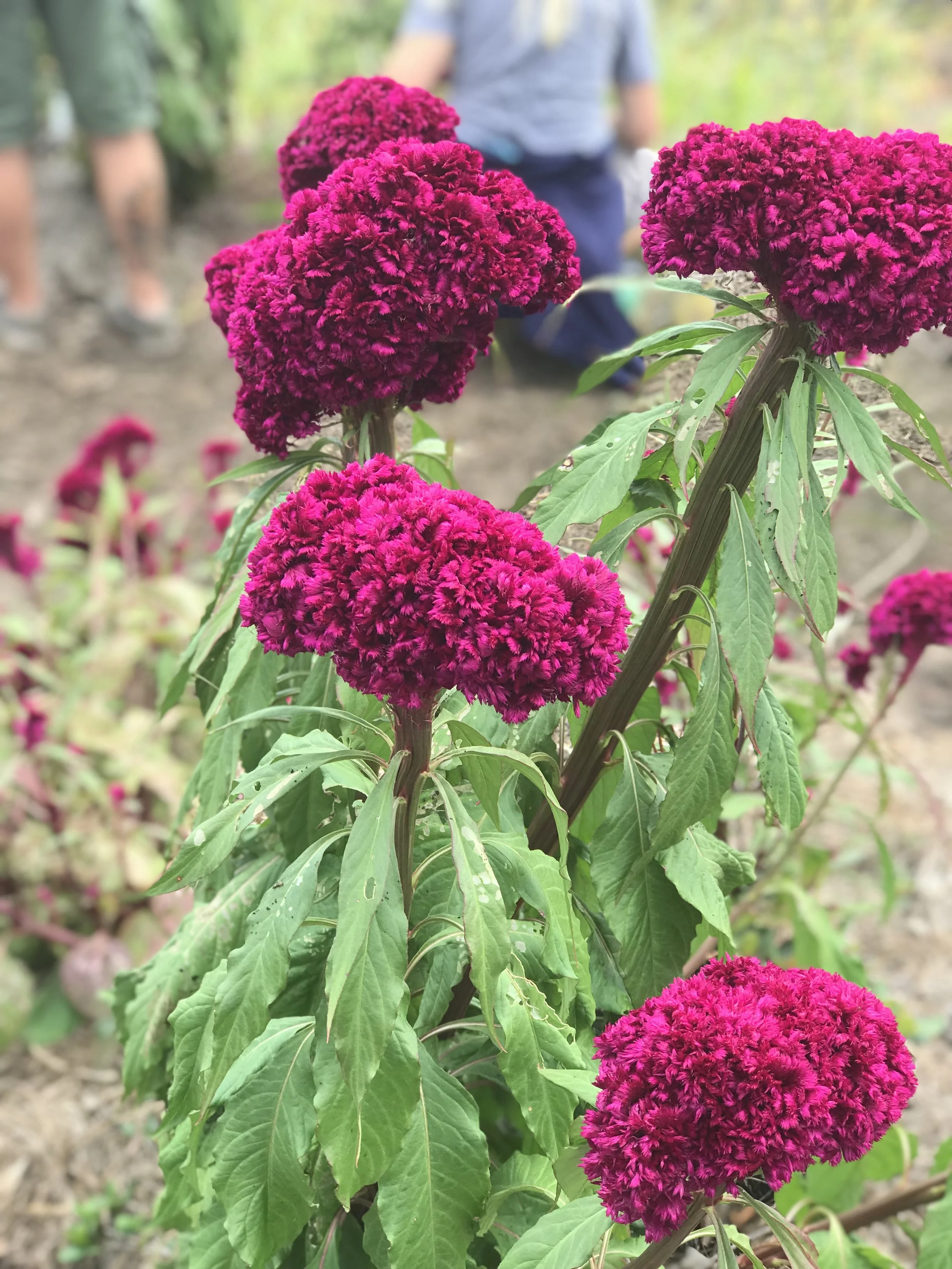Sowing Our Future Gardeners
/By Anna Claire Cunningham
Symphyotrichum oblongifolium
Hi, my name is Anna Claire, and I am a horticulture student at Stephen F. Austin State University in Nacogdoches, TX. As a child, the happiest memories come from beautiful experiences. Growing up, I found that the most extraordinary reality in life comes from the creation of magnificent surroundings. Today, I will be covering the topic of child-friendly gardening, and incorporating the importance of color, learning, and simple garden practices.
A student’s perception on a specific outdoor space has been directly connected to their working with the landscape itself (Muderrisoglu and Gultekin, 2015). Having a basic knowledge of gardening allows children to see the fun that can come from working with a landscape (Holmes and Lewis, 2013). Working at the Plantery, our micro-farm and teaching garden at SFA, has given me many opportunities to teach children about plants. We frequently have young students visit for educational events. We give them a tour of our gardens and have them plant a plant to add to our collective landscapes. Last fall, we had a mass planting of our in our herb bed with some high school students from the area for college experience day where we planted a variety of ornamental vegetables. These included Beta vulgaris (Swiss chard) and a few lettuces including Lactuca sativa 'Tango' and Lactuca sativa 'Buttercrunch'. The addition of these vegetables to our landscape is a nice contrast to the usual cut flowers and herbs that might be expected.
When teaching up and coming students, it is important to emphasize the different opportunities available with gardening and the variety of options for any landscape. Foodscapes have become a staple in society today, and if we learn about the importance, convenience, and potential of placing veggies in the landscape at an early age, we could change the face of horticulture forever.
Herb Garden at SFA Plantery
Some of the best forms of landscapes are unique ones, which is what we try to instill within our youngsters. One way to make a landscape more unique is by the addition of a wide variety of color, which is also conveniently very enjoyable for children to learn about. Gardens can provide a haven of all the colors available to the world, and fortunately, at SFA we have a variety of colorful plants just out our back door! One of my personal favorites is Symphyotrichum oblongifolium (aromatic aster) because of its vibrant purple color. It provides a delicate lushness to any landscape with a very full, branched system (Armitage, 2008). Another one of my favorites, due to its texture that looks like velvet and dark magenta color is Celosia cristata (cockscomb), which looks like something out of a Dr. Seuss book. Gomphrena globosa (globe amaranth) is an example of a colorful, textured, and a picturesque spherically shaped inflorescence. Simply put, the more visually entertaining a plant, the more interesting the landscape, which increases the chance of students becoming more intrigued in the learning experience.
Celosia cristata
Gomphrena globosa
Overall, by simply teaching children about the variety of landscape options, we are planting the seed for a beautiful future. People all over the world are recognizing and continuing to explore the importance of having plants in the lives of students (Lucas, 1997). I have faith in the continual adventure we call the future of horticulture. I hope you will join me, shovels and water hoses in hand, in cultivating excitement and interest in the next generation of agriculturists. Together, we can improve the world of plants!
References
Armitage, A.M. 2008. Herbaceous Perennial Plants. 3rd edition. Stripes Pub Llc. Champaign, IL.
Holmes, L., E. Lewis. 2013. The Beginner’s Guide to Gardening. Plant Friendly Publishing. Upper Saddle River, NJ.
Lucas, B. 1997. Learning Through Landscapes: The Importance of School Grounds. Australian Journal of Environmental Education. 13:85-88.
Muderrisoglu, H., P.G. Gultekin. 2015. Understanding the Children’s Perception and Preferences on Nature-Based Outdoor Landscape. Sage Journals. 24(3).
Photo credit: Anna Claire Cunningham







